Faberge and the First World War
Dear Friends, During the First World War, which this year marks 100 years since its conclusion, Faberge’s workshops did not stop their activities. The company offset the decline in the demand for jewelry and fancy items by fulfilling orders for the army. Faberge’s Moscow factory was renamed the Moscow Mechanical Works. After receiving orders from the War Department, Faberge began producing bullet cartridges, grenades, syringes, cigarette lighters, field dishes, as well as award items with Russian state symbols on bowls, cigarette cases, ashtrays, and etc.

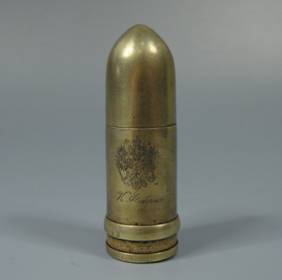


Naturally, there could be no question as to the use of gold and precious metals in making such items. All the items of that time were made of copper, brass and alloys, and they are marked by exquisite execution, elegance, and quality regardless of their practical applicability. The War Department repeatedly praised items made by Faberge as an example in the precision and thoroughness of Russian manufacturing skill.
Faberge’s Moscow Mechanical Works employed approximately 600 workers. Carl Faberge’s cleverness was not only in the fact that during the turbulent time of war he put the company on a strong economic footing. Since many of the company’s Moscow masters were engaged in fulfilling military orders, they were able to avoid mobilization and were not called to the front, where they could be killed. By proving the necessity of their participation in proceedings before the military department, Carl Faberge saved his employees from becoming cannon fodder in the meat grinder that was a ruthless useless war.
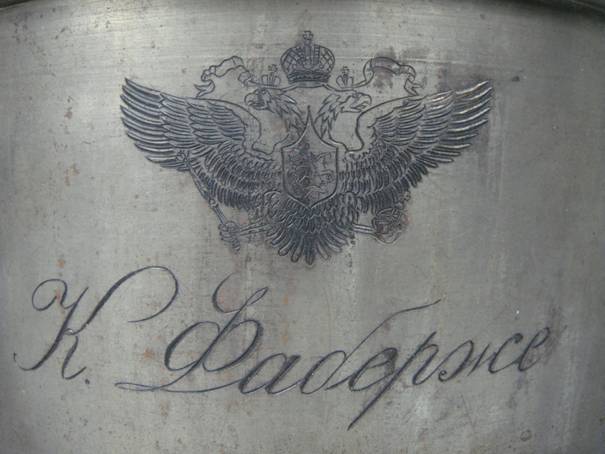
The Faberge Museum considers it important to develop and deepen the undeservedly forgotten theme, “Faberge and World War I”. This is not only a tribute to the many-sided work of Carl Faberge, but also a huge milestone in world history in the early 20th century that influenced the course of global events. The story of one company is closely interwoven with the history of the Russian state. Therefore, our museum regularly enriches its exposition with new additions of objects made in 1914-1917. Among the novelties we would like to highlight a syringe in its original case, a bucket with the engraving, “Faberge Partnership 1917”, and a brass field kettle.
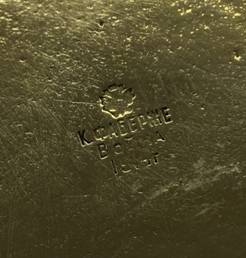
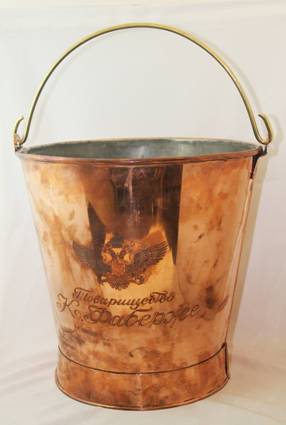
Also, it’s worth to mention the current exhibition in the General Staff Building of the State Hermitage Museum in St. Petersburg. This temporary exhibition, “Faberge and the Great War”, has been organized by our parent organization, the Russian National Museum (Moscow), with the participation of the Faberge Museum in Baden-Baden. The exhibition features 43 Faberge items dating to the time of the First World War. There are copper and brass samovars, kettles, lighters, pans, as well as a pan for sterilizing syringes labeled, “Infirmary in the Winter Palace named in honor of the Crown Prince and Grand Duke Alexei Nikolaevich” with the monograms of Empress Alexandra Fedorovna and Grand Duchesses Olga and Tatiana; a basin with the engraved inscription, “The military field hospital train № 143 named in honor of Her Imperial Majesty Empress Alexandra Feodorovna”, as well as a telegraph made by Faberge and other interesting exhibits.
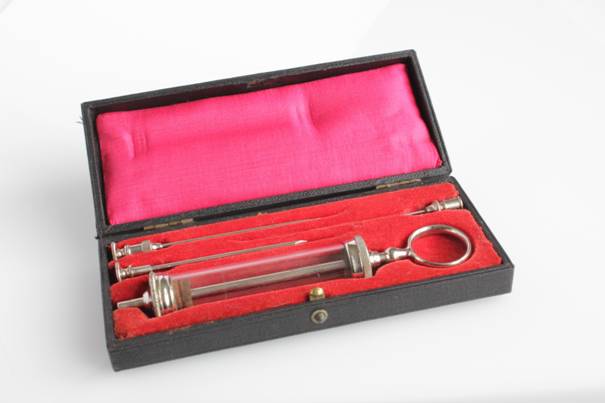
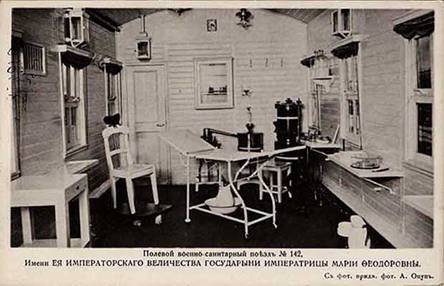
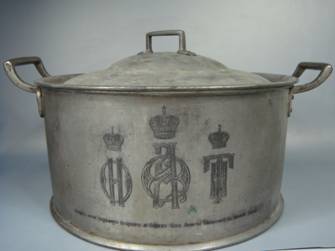
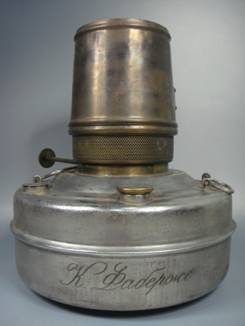
The exhibition runs from 12/30/2015 to 06/26/2016.
For more information, go to: https://www.hermitagemuseum.org/wps/portal/hermitage/what-s-on/temp_exh/2015/faberge_greatwar/?lng=en
The exhibition curator, Marina Nikolaevna Lopato, is head of artistic metal and stone in the department of Western European Applied Art of the State Hermitage Museum.
Thank you for your attention and welcome to Faberge Museum Baden-Baden!
